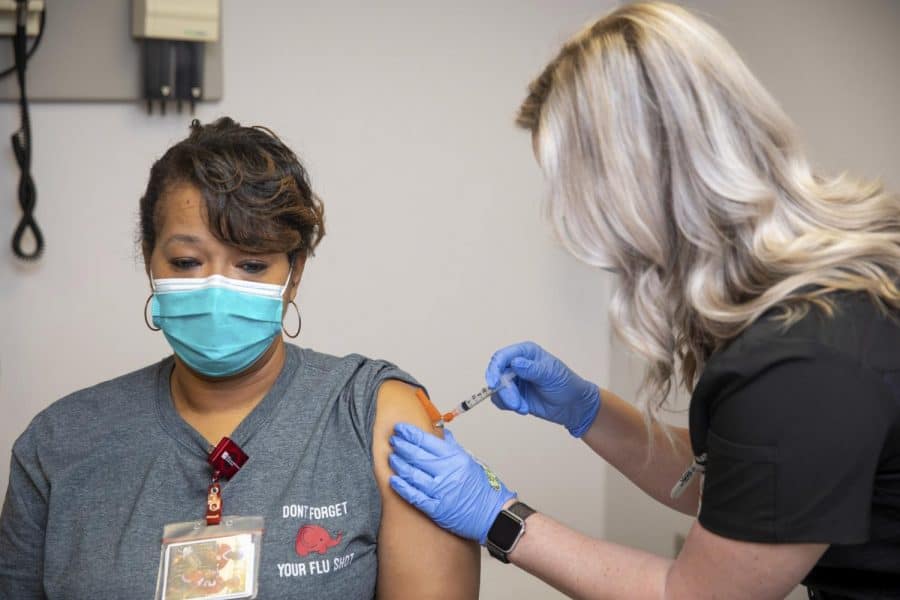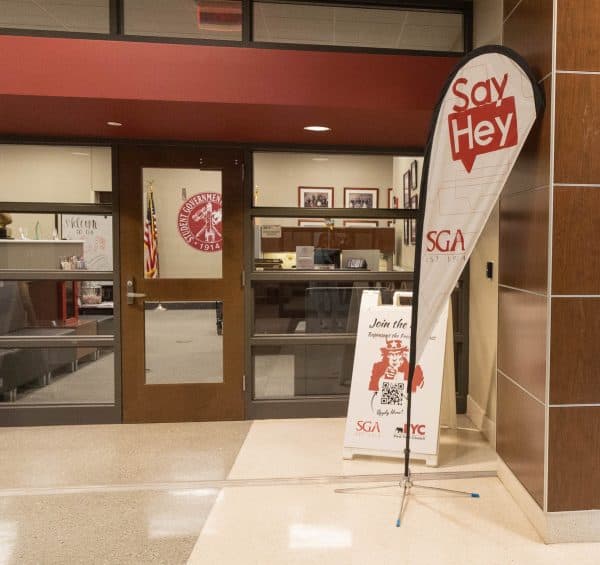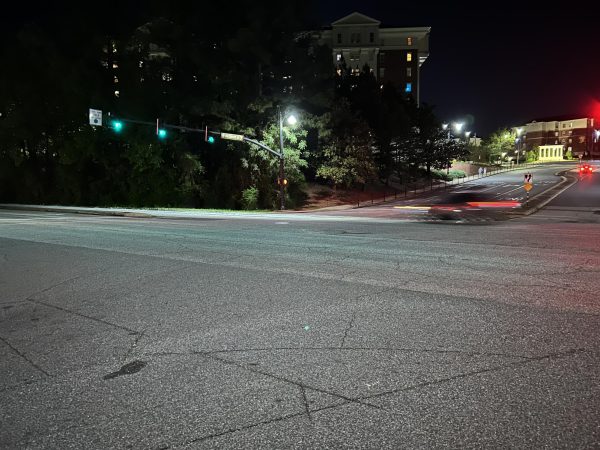UA distributes vaccines to new groups, awaits next batch
The University hasn’t been immune to nationwide delays.
More stories from Grace Schepis | @GraceSchepisCW
April 2, 2022
February 26, 2022
Tracey Smith of the College of Community Health Sciences receives one of the University’s first doses of the COVID-19 vaccine.
In early January, University Medical Center (UMC) began distributing its first batch of 3,500 doses of the two-part Moderna COVID-19 vaccine. Since then, the University has received about 1,000 additional first doses and 3,500 total second doses, according to a UA official.
Although both doses of the vaccine are identical, the number of vaccines have been reported as “first doses” and “second doses” by the University.
Monica Watts, associate vice president for communications, said UMC had distributed 3,100 doses by Feb. 12, and hoped to schedule 500 more first dose appointments in the following days.
About 600 second doses were administered by Feb. 12 and 450 were scheduled last weekend. The two doses are administered 28 days apart, and about six weeks have passed since the University distributed its first vaccines.
On Feb. 5, Lindsey Hughey, open records and policy specialist in UA’s Division of Strategic Communications, said vaccine distribution numbers are expected to be shared on the UA System COVID-19 Dashboard in the coming weeks. These numbers have not yet been reported on the dashboard, which is updated weekly.
Rona Donahoe, Faculty Senate president, provided vaccine distribution updates on Feb. 9. Initially, she said, the Alabama Department of Public Health (ADPH) advised UMC to administer all of the vaccines before reversing their advice. Donahoe said ADPH is now advising them to reserve some for second doses.
“Apparently Alabama was not 100% confident that we would continue to get the shipments that would be required to give everybody that second vaccination,” Donahoe said.
Myron Pope, vice president for student life, said University officials have started developing a distribution plan for students, but it is contingent on the supply available.
“Vaccine supply chains are dwindling,” he said. “We are hopeful that [the Biden] administration’s efforts to invest more in vaccines will help. However, it seems that the companies are just not producing enough quickly enough to be able to respond. It is the same problem we are seeing across the country.”
The University hopes to distribute to everyone other than students by the first week of March, according to Donahoe.
Watts said the University is awaiting additional doses, but is unsure when they will arrive.
The vaccine was initially offered to healthcare providers, first responders, vulnerable populations and Capstone Village residents and employees. First responders include those employed at University Medical Center or the Student Health Center, along with officers at The University of Alabama Police Department.
While UMC has offered the vaccine to “the community-at-large, including healthcare workers, first responders, public safety employees, residents of long-term care facilities like Capstone Village, and affiliated individuals 75 and older, that is not UMC’s focus at this time,” according to the Health Info website.
The University, in consultation with the Alabama Department of Public Health, is following a closed point of dispensing (POD) plan that prioritizes the campus community, according to a Feb. 3 update to the Health Info website. The plan is to offer vaccines to current UA faculty, staff and frontline contract workers, including dining, service and transit workers, in the coming weeks. Last semester, the University employed about 7,000 faculty and staff.
UMC is offering the vaccine to members of the campus community through contact lists developed by the Office of Emergency Management. The current plan accounts for job responsibilities, health implications, age and student interaction when notifying individuals.
Richard Friend, dean of the College of Community Health Sciences, was unavailable for comment by the time of publication.











